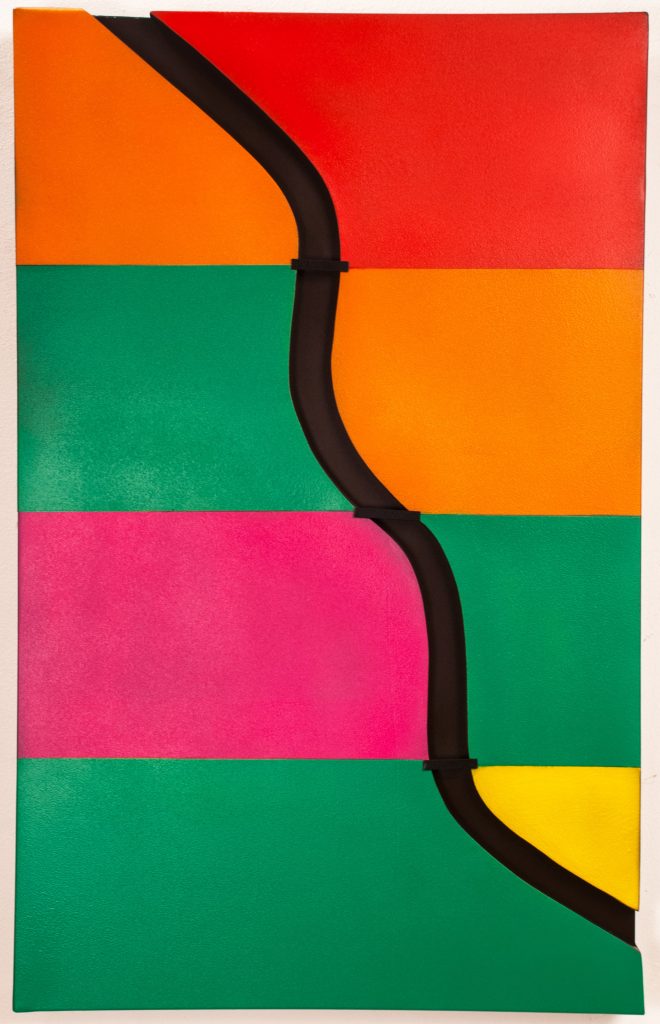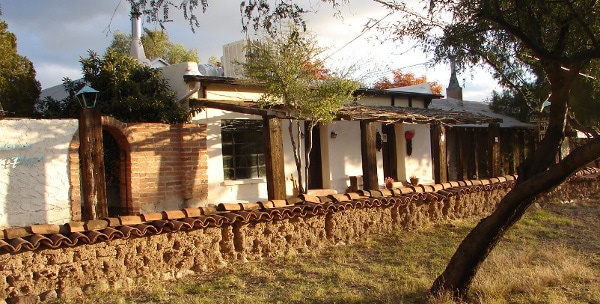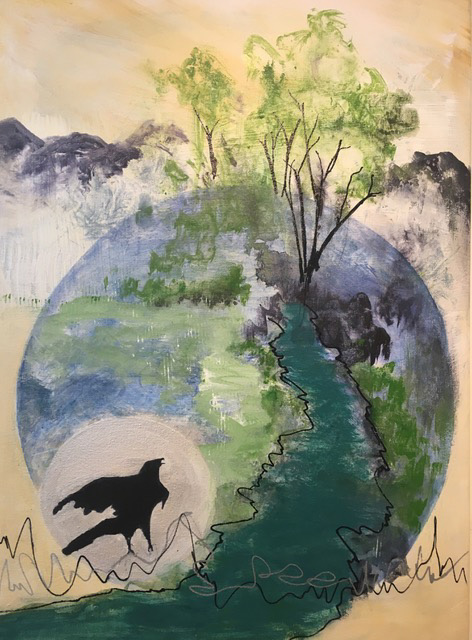Above: Nancy Valentine, Lowe House Project Program Coordinator, and Edilia Chacon, Cultural Promotion Director at the Mexican Consulate in Nogales, take in the exhibit
Rio Compartido/Shared River, on view at Tubac’s Lowe House through November 2019, examines the complex relationship between the Santa Cruz River and the culturally diverse region through which it flows. Attendees will experience “emotional connectivity” to the art they see, says Nancy Valentine, who coordinated the exhibit with Mexican artists curator Ricardo Santos Hernández and U.S. artists curator Barbara Kuzara. The oil painting “Feed Me,” by Karla Osete, has proven especially compelling. From a distance, it shows a serene and beautiful riverine landscape. As viewers move closer to the canvas, surprising and disturbing details emerge: scenes of pollution, wildlife under stress, overbuilding, and the impact of the international border.

For Valentine, Osete’s artwork—and the fact that one must share space with it to experience its full effect–highlights the human tendency to keep a comfortable distance, seeing what we wish to see “rather than what is really there.” Each work featured in Rio Compartido/Shared River has emotional weight, says Valentine, and people never fail to respond to that. “Some are stunned into silence” while interacting with the art, she observes, and some “give an audible sigh. Others are very verbal,” inspired not to contemplation but to discussion and action.

From an early age, Nancy Valentine was herself inspired to act through art. She moved to Lowe House in the 1960s with her artistically-minded parents, who operated a gallery from the home. The house, originally consisting of a single room, has been sheltering people since the 1760s. As Lowe House Project Program Coordinator, Valentine facilitates a process that brings visionary creators from Mexico and the United States together under this centuries-old roof. The Lowe House Project does not just provide artists in residency a place to stay or to display the art they create while living there. It also provides a community network that enables creators to explore, through the Santa Cruz River, how water, borders, and art intersect with each other.

Rio Compartido/Shared River coincides with the Smithsonian Museum on Main Street Water/Ways traveling exhibit. Made possible by Arizona Humanities and Arizona State University, Water/Ways explores what water means to twelve small or rural communities throughout Arizona, an especially complex task in Tubac. The Santa Cruz River makes two crossings of the border between Lowe House Project artists’ neighboring countries. From its southeastern Arizona headwaters, the river flows south into Mexico, then makes a U-turn to journey north through Nogales, Tubac, and Tucson.

To Nancy Valentine, the Santa Cruz River represents “shared humanity, heritage, and habitat.” The bi-national group of Rio Compartido/Shared River exhibit sponsors–Community Foundation for Southern Arizona, Friends of the Santa Cruz River, Imfoculta CECUN, Tubac Historical Society, and Tubac Rotary Club—exemplifies the close relationships fostered by water. Like the river, poetry and painting, clay and cameras can blur boundaries of ideology and experience. Art has a way of arrowing straight to the heart of issues, conveying difficult information in an intuitive and spontaneous way that “other means of communication don’t accomplish,” Valentine says. “People get it, somehow.”
- Both Rio Compartido/Shared River and Smithsonian Water/Ways run through November 2019.
- Water/Ways, located at Tubac Presidio State Historic Park, is open daily 9:00 am-5:00 pm.
- Rio Compartido/Shared River, located at Lowe House Project, is open Thursday-Saturday 11:00 am-3:00 pm and Sunday 12:00 pm–3:00 pm, or inquire about appointments by emailing Program Coordinator Nancy Valentine at tubacval@msn.com.
All images courtesy of Nancy Valentine and the Rio Compartido/Shared River exhibit

